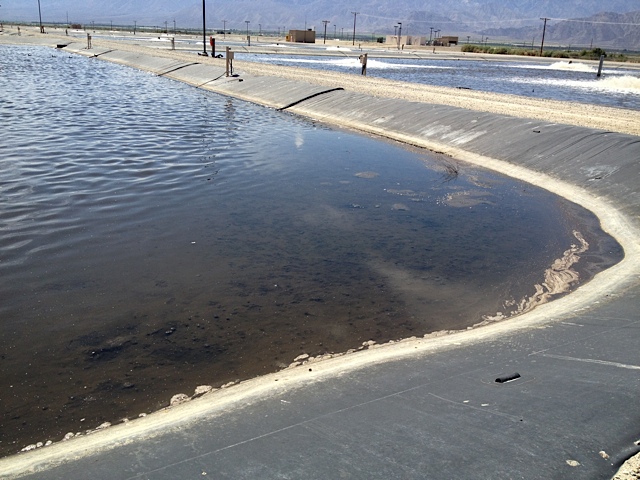Wastewater lagoon sludge buildup is a common occurrence for wastewater treatment lagoons worldwide. If left unchecked, sludge can lead to higher effluent levels of BOD, TSS and ammonia (not to mention some terrible lagoon odors). For an extreme example of how lagoon sludge can build up, see our previous blog on Wastewater Lagoon Mixing Alleviates Odor & Sludge Issues.
This article, the first in a two-part series, focuses on the causes and subsequent effects on your wastewater lagoon when sludge starts to build up. We will explain your options for treating sludge buildup in the second article.
The Causes of Wastewater Lagoon Sludge buildup:
- Lagoon Age—The vast majority of wastewater treatment lagoons are designed for partial mix conditions. This means that a certain amount of sludge buildup over time is not only expected, but designed. Typically the bottom 1–2 feet of a wastewater lagoon is designated as “sludge storage” where it is expected that over the 20-year lifespan of a lagoon, sludge will accumulate. In fact, this sludge storage area is expected to act as an anaerobic zone, where certain solid influent material, such as plastics, can break down anaerobically over a long period of time. Unfortunately, this doesn’t change the fact that these sludge mats can have adverse effects on your effluent levels.
- Poor Lagoon Mixing—Your lagoon aeration technology will affect the rate at which lagoon sludge will accumulate. Surface aerators, for example, are generally very good at mixing the first 6 feet of the water column. However, beyond this point they are less able to keep the water sufficiently mixed. As a result, solids from the influent tend to settle and begin to build up at the base of the wastewater lagoon. It is very common for lagoons utilizing surface aeration to experience excess sludge buildup.
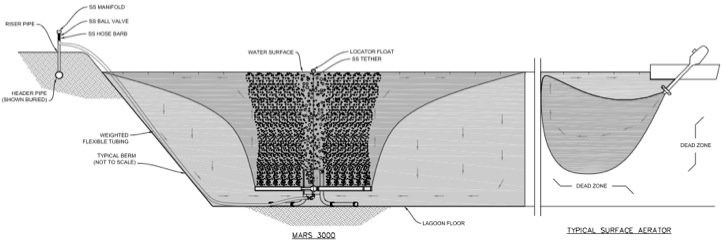
Fine bubble aeration systems are better at mixing deep into the water column, as they are typically positioned near the bottom of the lagoon. This allows the rising bubbles to mix and circulate much of the water. However, fine bubble systems are not as adept at creating turbulent mixing. Turbulent mixing generates more violent and churning action, creating contact between the solids and bacteria attempting to break them down. Because fine bubbles are so small, they generally fail to create this action. Moreover, due to being elevated off the bottom of the lagoon, they leave a dead zone underneath where they are located. This can result in sludge buildup underneath where the fine bubble diffusers are located.
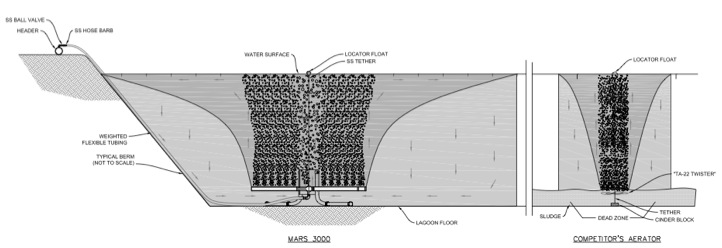
The Effects of Wastewater Lagoon Sludge Buildup:
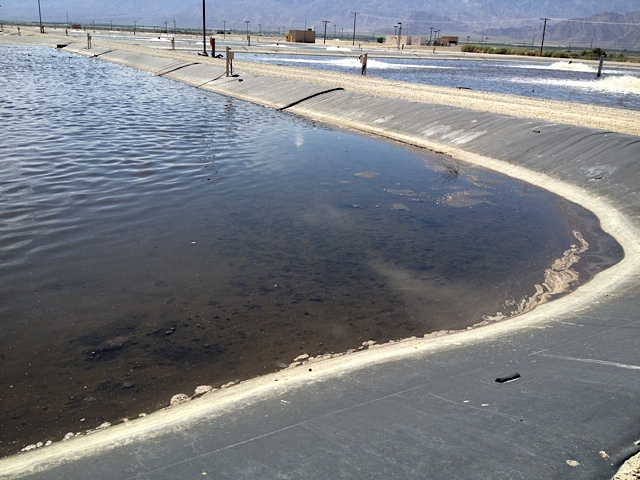
- Higher BOD & TSS Effluents—If wastewater lagoon sludge is allowed to accumulate in excess, it can short-circuit the treatment process overall. It does this by reducing the volume of water a lagoon can hold and thereby lowering the retention time. The lower the retention time, the less time there is for proper treatment to occur. This can lead to an increase in the effluent concentrations for BOD and TSS. Eventually, excess lagoon sludge could lead to a breaching of permitted effluent levels. In extreme cases, this can lead to complete system failure.
- Lagoon Odors—Large accumulations of lagoon sludge mean that the breakdown will begin to occur anaerobically. First of all, this means it will be a very slow process. Secondly, the process will release noxious gases. Once the noxious gases escape the confines of the lagoon, they can make the neighbors very upset. The more lagoon sludge you have, the more likely it is that unpleasant odors become an issue.
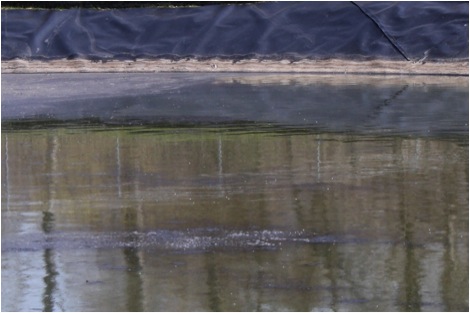
- Ammonia Levels May Spike—In some circumstances, anaerobically digesting sludge can actually release ammonia into the water column of the lagoon. This can lead to a situation where the effluent ammonia concentration is higher than the influent. Governing bodies don’t often look favorably upon this. For more about lagoon ammonia, read our blog, Sources & Treatment of Lagoon Ammonia.
- Lagoon Turnover—In extreme cases of lagoon sludge buildup, the sludge can actually float on the surface. This can create sludge islands, or even cover the entire lagoon. For a litany of reasons, this is very bad for your wastewater lagoon.
The Ares Aeration® System is designed to mix the entire water column to help minimize sludge buildup over time—download our literature for more information.
